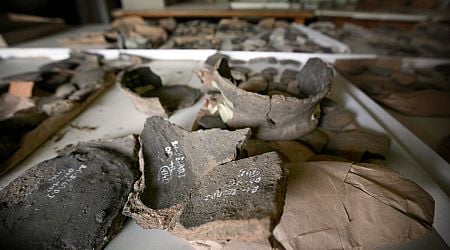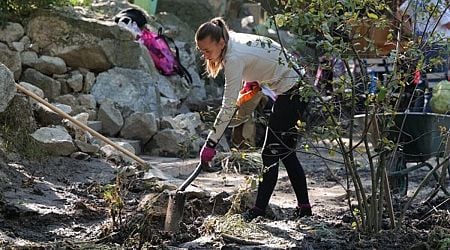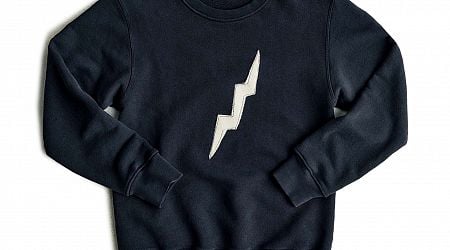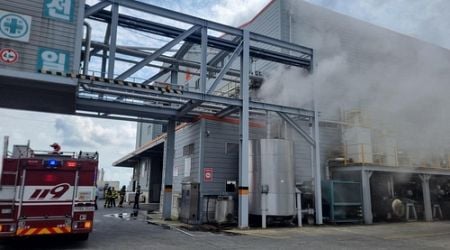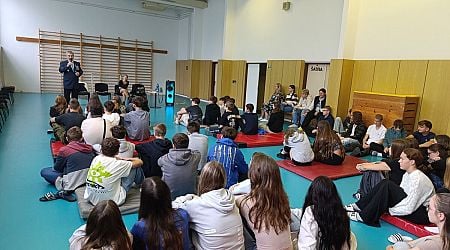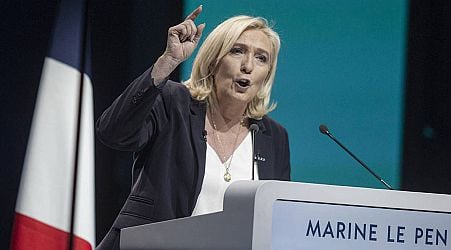Shedding light on the history of the Slovak territory, one find at a time
What's new in science in Slovakia?

Even though summer is usually the time when people take a vacation, Slovak scientists still experienced busy months.
This is especially true of the archeologists who reported various finds, which shed light on how people of the distant past lived in the territory of Slovakia. In addition, several scientists received recognition for their research.
In this overview, you will also find a selection of research conducted at universities and other institutions, including on bioplastics, how the town of Trenčín is becoming more energy efficient, as well as science stories that have appeared on the Slovak Spectator website.
Celebrating exceptional scientists
The Eset Science Award is once again bringing attention to exceptional scientists. This year's winners in three categories will be announced on October 10, with two chosen by an international jury chaired by Nobel Prize winner Emmanuelle Charpentier. Continuing with the tone set by the Starmus science and art festival earlier this year, the theme of this edition is "The Future of Our Planet".
The award finalists' work and research reflect the challenges our home in the universe is facing.
In the Outstanding Scientist in Slovakia category, the jury will choose one of the following: Mária Bieliková, internationally recognised expert on artificial intelligence; Michal Mego, an oncologist whose research has made advances in cancer treatment; Milan Sýkora, a chemist who worked in the Los Alamos National Laboratory; Martin Venhart, a nuclear physicist who worked in CERN; and Norbert Žilka, a neuroimmunologist.
In the Outstanding Scientist in Slovakia Under the Age of 35, the finalists are Matúš Dohál, a biomedic; František Herman, a theoretical physicist studying superconductivity; and Michal Kvet, a computer scientist.
Finally, microbiologist Helena Bujdáková, mathematician Ivan Cimrák, artificial intelligence expert Igor Farkaš, and material scientist Peter Peciar are finalists in the Outstanding Academic in Slovakia category.
Uncovering ancient past
The last few months have presented a treasure trove of archaeological finds that shed light on the history of various cultures and peoples living in the territory of Slovakia.
In eastern Slovakia, a Slovak-Polish team of archaeologists made an extraordinary find in the village of Hatalov. During an excavation on a mound, the well-preserved skeletal remains of young male individual aged 16-18 were discovered. According to the experts, he belonged to a population of the Pit Grave Culture dating to 3300-2600 BC.
The name alludes to their burial tradition. The finds, including wooden elements used in the construction of the grave pit, the method of laying the dead in a supine position, as well as the presence of red dye, confirmed that he belonged to this particular nomadic culture. This is the first indisputable evidence of the presence of these people in the territory of Slovakia.
In a similar vein, recent finds in the Hučivá Diera cave in the Belianske Tatry mountain range, northern Slovakia, has confirmed that it was used as a campsite by the Magdalenian culture dating back more than 14,000 years. This is the first time these people appeared in the territory of Slovakia.
A Slovak-Polish team uncovered a wide range of chipped stone tools, bones belonging to game and other small bone artifacts, among other things. Similar tools have so far been primarily found in the territory of today's England, the Netherlands and Switzerland.
It is a fact that Roman legions led by Emperor Marcus Aurelius made their way to the territory of Slovakia. Recently, archeologists found a Roman camp near the village of Želiezovce on the Hron River in the Nitra Region. They have spent decades seeking it out.
The camp was dated to the latter half of the 2nd century CE, to the era of the Marcomannic Wars, when Romans wanted to subdue the Germanic tribes that repeatedly invaded the empire. As this is the only camp that has so far been detected near the river, archaeologists strongly believe that it may have been here that Marcus Aurelius penned a part of his Meditations. According to internal notes, the first part was supposed to have been written at this site.
Recognition of the work of scientists
In June, the team of the toxicologist Helena Kanďárová, head of SAV's Centre of Experimental Medicine, took part in the LIVe 2024 conference focusing on the use of innovative approaches to testing toxicity without using animal subjects. Among competition from the US, Europe and Australia, the team's project won a prestigious grant.
This will allow the team to study the toxicologic profile of drug candidates in the respiratory tract. As part of the grant, the team will have access to reconstituted lung tissue models worth $15,000.
Kanďárová is a recognised scientist abroad; in 2022, for example, she won the prestigious EUROTOX Award Lecture for her fundamental contribution in the field of validation and implementation of alternative methods, which use innovative approaches without the need for animal testing.
In July, professor Silvia Pastoreková, director of the Biomedical Research Centre of the Slovak Academy of Sciences, became the first representative of the Slovak scientific community elected to EMBO, a major international organisation in the field of life sciences. Nearly one hundred Nobel Prize laureates are or have been members of EMBO.
According to EMBO director Fiona Watt, newly elected members "have made outstanding contributions to basic research in life sciences, and in many cases their work has paved the way for innovations that have improved lives and living conditions around the world."
She was part of the team that clarified one of the mechanisms that mediate the adaptation of tumour cells to lack of oxygen in the form of a protein.
"The protein is considered a biomarker of hypoxia and is often used not only in diagnostics, but also in research. Researchers around the globe use antibodies that we developed to detect the presence of CA9 protein indicating hypoxia," Pastoreková told The Slovak Spectator in 2022, after she became the ESET Science Award laureate in the Outstanding Scientist in Slovakia category.
In August, geologist Michal Šujan from Comenius University received the IUGS Early Career Scientist Medal during the opening ceremony of the 37th International Geological Congress in Busan, South Korea. He received the medal based on his research and application of cosmogenic nuclides in geochronology and sedimentological research. These nuclides are created when high-energy cosmic rays interact with the nucleus of an atom, which can happen on Earth or in its atmosphere. They allow insight into various geological and astronomical phenomena.
Overview of other research and development activities at universities:
- Three species of spiders new for Slovakia; Slovak Academy of Sciences; lead scientist Pavol Purgát. The Burda and Slovenský Kras mountain ranges belong among the warmest areas in Slovakia. As such, they are a buffer zone that allows an influx of plant and animal species from the Mediterranean. It was here that a new species of spiders was discovered. Read more here.
- The biodiversity meadows project; Slovak University of Agriculture in Nitra; lead scientist Alica Beňová. The goal is to create permanent meadow communities for the university that will be used for student education, public awareness, but also for research or professional seminars. Read more here.
- Advanced electronics with supercaps; Žilina University; lead scientists Michal Frivaldský, Pavol Makys. The team is researching an advanced autonomous power system for space robotic arms. Now they are analysing the possibility of using supercapacitors, which could cover the demands for power supply during the manipulation of the robotic arm.
- The impact of the changing climate on the spread of the widely expanding Ambrosia artemisiifolia species; Comenius University; lead scientist Michal Hrabovský. An invasive species from the Americas, the plant was first found in Slovakia in 1949. Since then, it has spread to half of the country and is a cause of allergies. The study provides four predictions as to its future spread in the country. Read more here.
- Radiocarbon in the atmosphere and in tree rings - anthropogenic effects and climate change; Comenius University; lead scientist Pavel Povinec. Two papers (you can read them here and here) assessing the air pollution caused by CO2 and carbonaceous aerosols were published. One evaluates the 55-year evolution of the concentration of radiocarbon in the atmosphere and biosphere as well as predicts its further development, especially in connection with climate change. The other presents the important discovery that the contribution from burning wood already exceeds the contribution of fossil aerosols, a fact that can impact the population's health.
- SAV scientists contributing to new fat cell knowledge; Slovak Academy of Sciences; lead scientist Miroslav Baláž. In cooperation with Swiss and US teams, the SAV experts found several new subtypes of fat cells that use different mechanisms to generate heat and may thus help in the treatment of obesity and metabolic diseases. Read more here and here.
- Pipeline politics: Balancing energy needs and environmental concerns in EU - Russia relations; Comenius University; lead scientist Ivana Gondášová. The aim of the study is to examine how the European Union solves energy and environmental protection issues, mainly in regards to the Nord Stream 2 gas pipeline. Read more here.
- A new method for detecting the causes of extreme phenomena; Slovak and Czech Academy of Sciences; lead scientists Martina Chvosteková and Milan Paluš. The question of what causes extraordinary events, such as extreme weather conditions or financial market crashes has been puzzling scientists for quite some time. Now a joint team of Slovak and Czech scientists developed a new calculation method that helps clarify which of the potential causes actually causes extremes. Read more here.
- Both Enantiomers of 2-Hydroxyglutarate Modulate the Metabolism of Cultured Human Neuroblastoma Cells; Comenius University; lead scientist Radovan Murín. The goal is to study the effects of specific substances produced by certain brain tumors. These substances are associated with more aggressive tumors and a worse prognosis for patients. Read more here.
- Selectivity explanation of novel ALR2 inhibitors as potential drugs of diabetic complications; Comenius University; lead scientists Andrej Boháč and Lucia Kováčiková. The goal is to develop inhibitors of the enzyme responsible for diabetic complications, specifically to prepare highly effective derivatives so that the side effects of potential drugs are excluded. Read more here.
- IMMERSE (Implementing Mobile Mental Health Recording Strategy for Europe); Comenius University; lead scientist Anton Heretik. The goal is to develop monitoring technology that can provide professionals with valuable insight into the daily lives of their patients and help the latter gain greater insight into their own mental health. Read more here.
- STEAM Connect project for co-creating transdisciplinary pedagogical innovations from STEM to STEAM; Comenius University; lead scientist Lilla Koreňová. The work focuses qualitative research conducted with future primary education teachers, using the STEAM (Science, Technology, Engineering, Arts and Mathematics) concept. Read more here.
Other Slovak science stories on Spectator.sk:
PHYSICS: Nuclear physicist who went to Chernobyl and Fukushima and major atomic bomb testing sites has set up a world class lab in Bratislava.
PALAENTOLOGY: Slovak scientist Andrej Čerňanský from Comenius University in Bratislava is continuing to shed more light on long-extinct animals. Last year he co-authored a study on a new species of gecko that survived the asteroid impact that wiped out the dinosaurs. Now he's back with another discovery.
WEATHER: One of the most well-known pieces of weather lore in Slovakia is about Medard, which goes like this: Medard's drop will be ongoing for 40 days. Is it still valid though? One hydrologist set out to investigate.
VIDEO GAMES: While its neighbouring countries have already had one or more big videogame hits, Slovakia cannot say the same. One such game could be Vivat Slovakia, an open-world game made by the small Bratislava-based developers inspired by real-life events.
HISTORY: History portrays them as the bitterest of enemies, but a discovery near a village in western Slovakia almost 60 years ago shows that there was not always violent antipathy between the Romans and Germanic tribes that lived on the edge of their empire.
CLIMATE: Slovakia's summer has been a record-breaker, and not in a good way, says climatologist.
EMIGRATION: Meet the historian who flies to the US to preserve Slovak heritage.
This article is supported by the ESET Foundation, whose annual ESET Science Award recognises exceptional scientists.


















